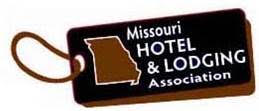
On the National Register of Historic Places, this building still contains the original hand hewn wooden pews, the original pipe organ, and the sonorous bell, still in use today. (in Pilot Knob)
As the Civil War broke out, a group of German immigrants began building their new church. Little did they know that in 1864, three years after the building was completed, wounded soldiers would lay dying in the place of worship. Doctor Seymour Carpenter, Major, US Army, established several makeshift hospitals in the town of Pilot Knob in preparation of the day of battle. On September 27, 1864, despite the good doctor’s efforts, there were more wounded soldiers than his staff could handle or his hospitals house. Since that day, the church has barely changed and remains a beautiful example of a small town 1860s church right down to having the original pastoral robes.
When the Civil War began, many of Immanuel’s men enlisted in the Pilot Knob Home Guard to protect the area from rebels. From time to time, the church was used by them and later the Union Army as a meeting place. The railroad terminated just a few blocks east of the church, as did the telegraph lines. Early in the war, the church made an ideal outpost for the soldiers who were stationed in Arcadia at Fort Curtis. Many of the troops from Iowa, Illinois, Wisconsin and Missouri were German immigrants or of German stock and mixed freely with members of Immanuel. Several frequently joined the church members in their worship.
After Fort Davidson was built in 1863, Immanuel still served the Union cause, because the fort was only a fortified position and lacked any buildings necessary for the army’s administrative functions. To this day, the congregation possesses a Union telegram book, many of whose telegrams do not appear in the official Records of the Civil War.
The entire Arcadia Valley shook with cannon and gun fire on Sept. 26 and 27, 1864, as Gen. Sterling Price’s Confederate army hammered at Ironton and Fort Davidson. By the time the fighting ceased on the 27th, more than 1100 soldiers lay dead or wounded. After rebel fire began peppering St. Mary’s and the schoolhouse, Dr. Carpenter commandeered Immanuel Lutheran Church as the main hospital and several local houses to tend to the wounded.








